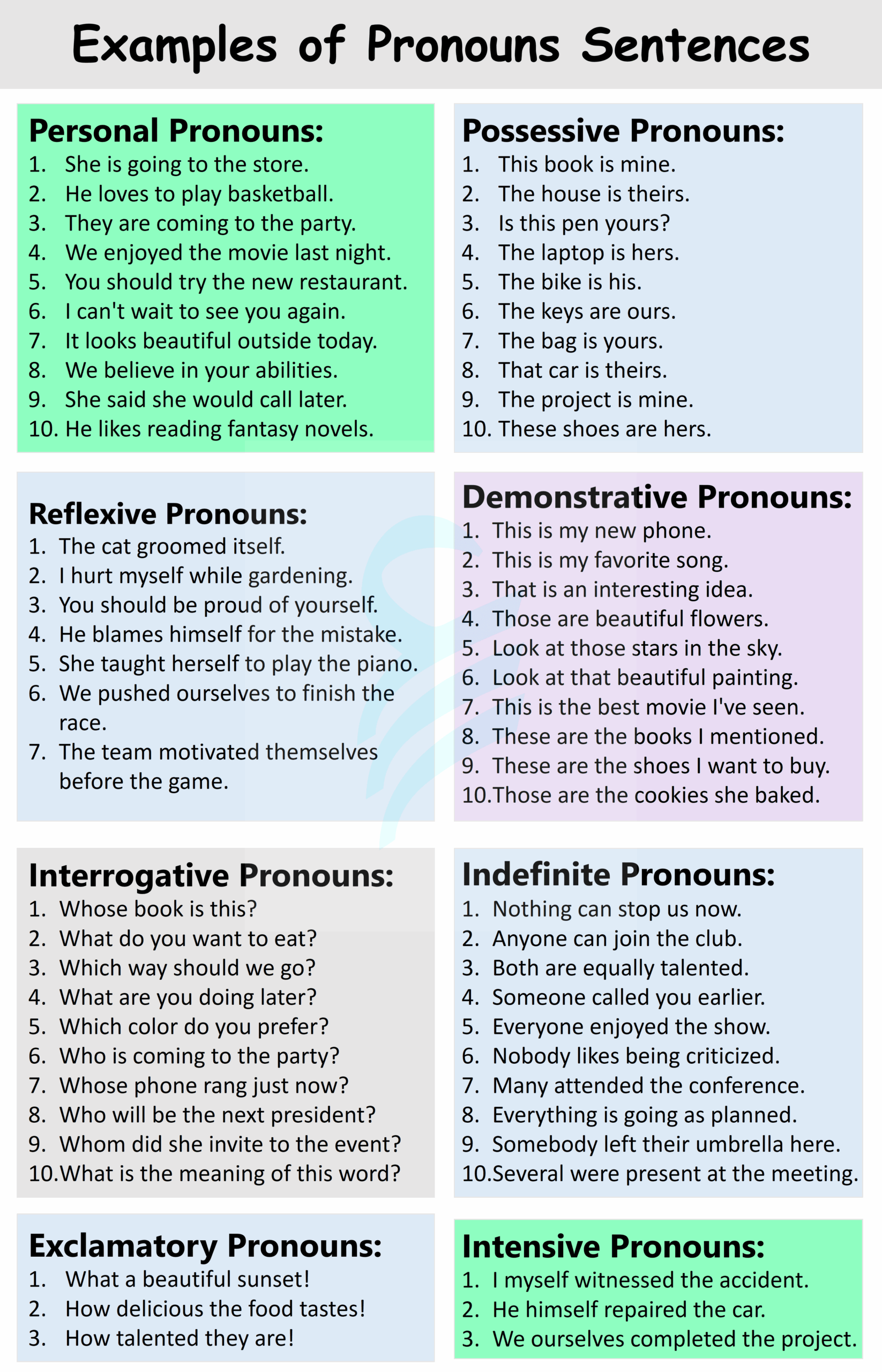Personal pronouns are words used to replace nouns in a sentence. They help make sentences more concise and avoid repetition. Understanding how to use personal pronouns correctly is essential in writing and communication.
Here, we will explore an example of a personal pronoun sentence to illustrate its usage and importance in language.
Example:
She went to the store to buy groceries for the party.
In this sentence, the personal pronoun “she” replaces the noun that refers to a specific female person. This helps avoid repeating the person’s name and makes the sentence flow more smoothly.
Personal pronouns come in different forms depending on their role in a sentence. They can be singular or plural, subjective or objective, and possessive or reflexive. It is crucial to use the appropriate personal pronoun based on the context and grammatical rules.
Using personal pronouns correctly can also help maintain clarity and coherence in writing. They enhance the readability of a text and make it easier for the reader to follow the narrative or argument presented.
Furthermore, personal pronouns play a significant role in establishing the tone and point of view in a piece of writing. They can convey the writer’s perspective, attitude, or relationship with the subject matter, influencing how the reader interprets the text.
Overall, personal pronouns are essential linguistic tools that contribute to effective communication and expression. By mastering their usage, writers can create more engaging and impactful content that resonates with their audience.
In conclusion, personal pronouns are integral to the structure and clarity of sentences. They help streamline language and convey meaning efficiently. Practice using personal pronouns correctly to enhance your writing skills and communicate effectively.
